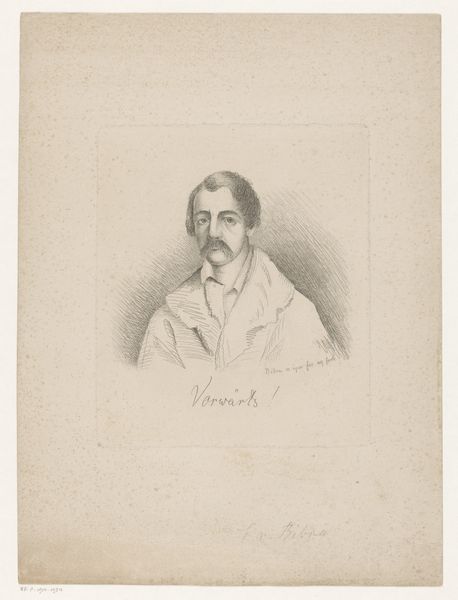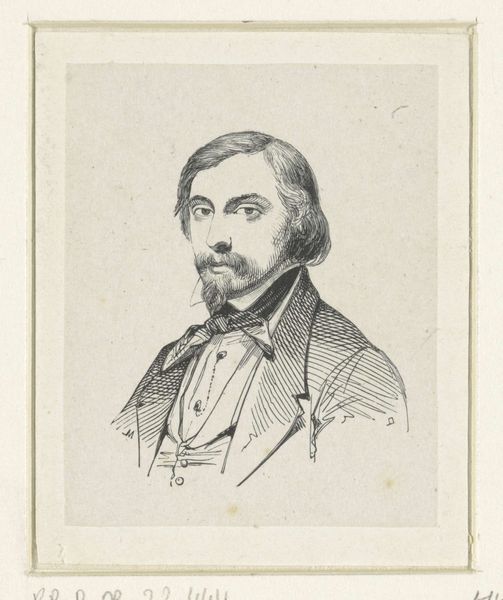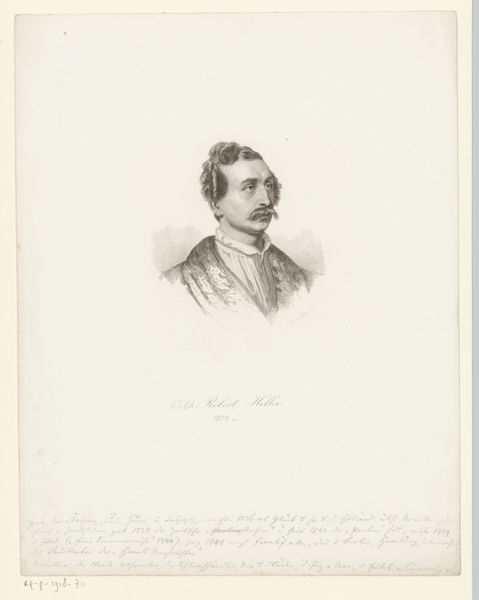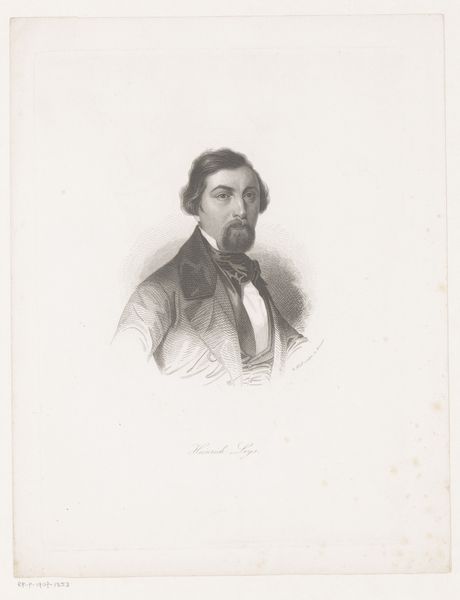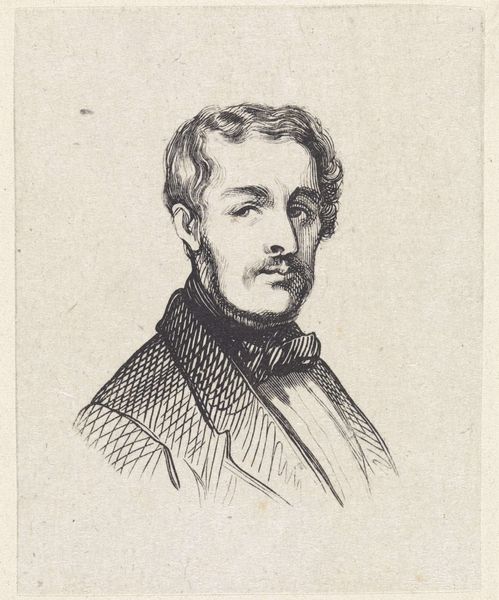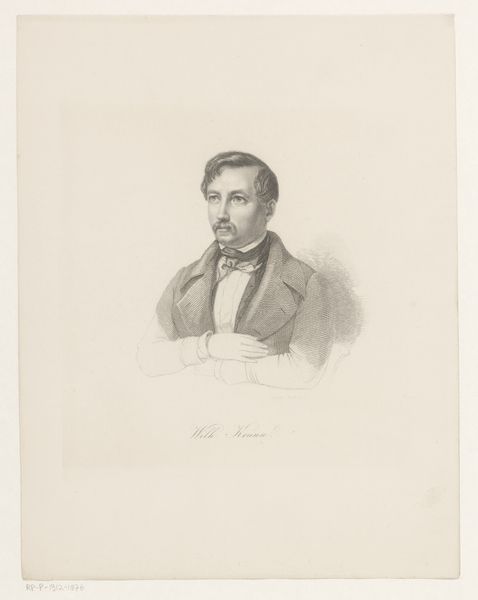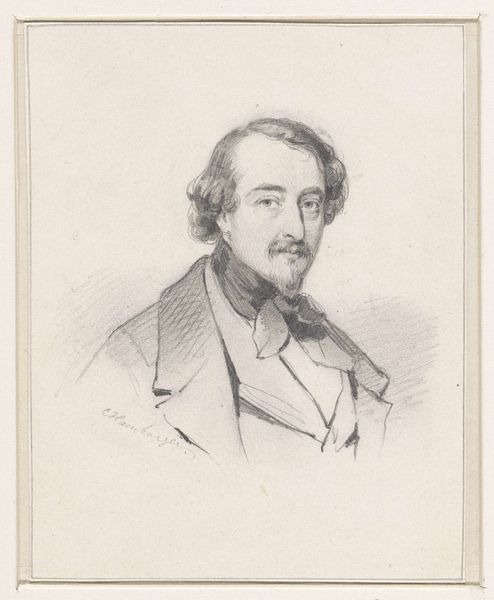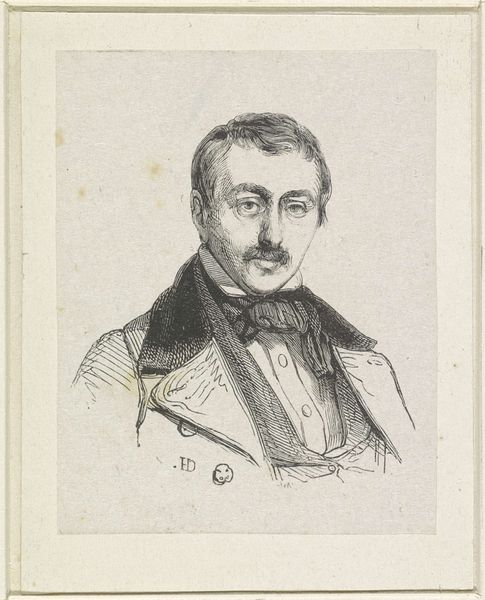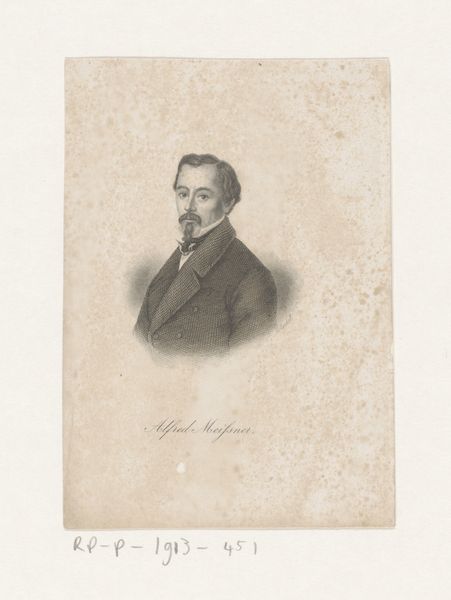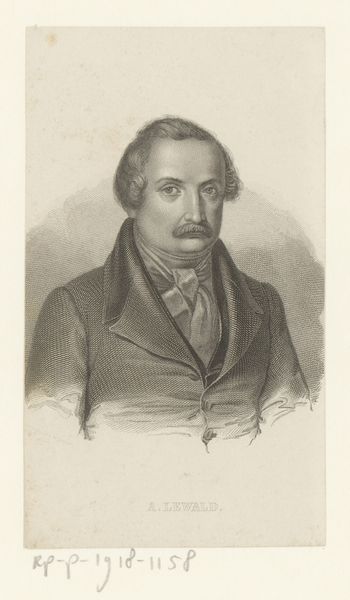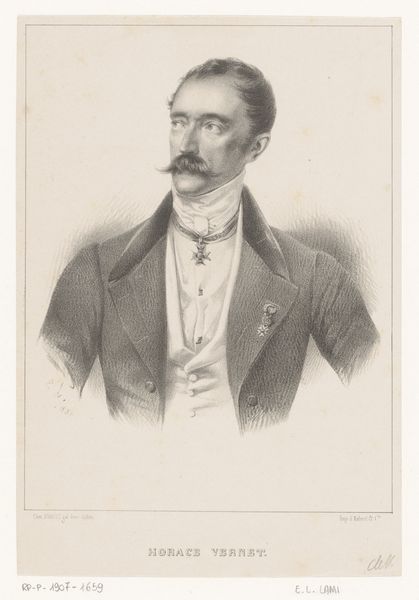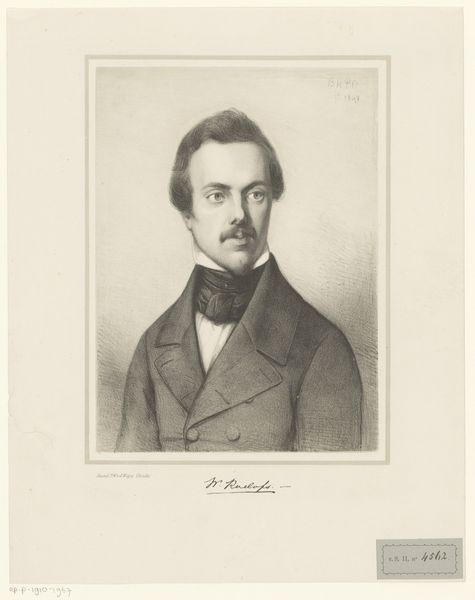
engraving
#
portrait
#
neoclacissism
#
figuration
#
line
#
engraving
#
realism
Dimensions: height 242 mm, width 158 mm
Copyright: Rijks Museum: Open Domain
This is a portrait of Lodewijk Napoleon Bonaparte, made by Rombertus Julianus van Arum. It's an engraving, so the image is formed by making incisions into a metal plate, which is then inked and pressed onto paper. The fine lines create subtle gradations of tone, giving the portrait a sense of depth and realism. But engraving wasn’t just about capturing likeness. In the 19th century, it was a key part of a vast print industry. Images like this could be reproduced and distributed widely, shaping public perception of political figures. Consider the labor involved: the skilled engraver meticulously translating an image into a matrix of lines, the printers producing countless copies. This was work for hire, a world away from the romantic idea of the solitary artist. Looking closely at the materials and processes of this print reminds us that art is always embedded in systems of production, labor, and consumption. It challenges us to look beyond the image itself and consider the social and economic forces that shaped its creation and distribution.
Comments
No comments
Be the first to comment and join the conversation on the ultimate creative platform.

